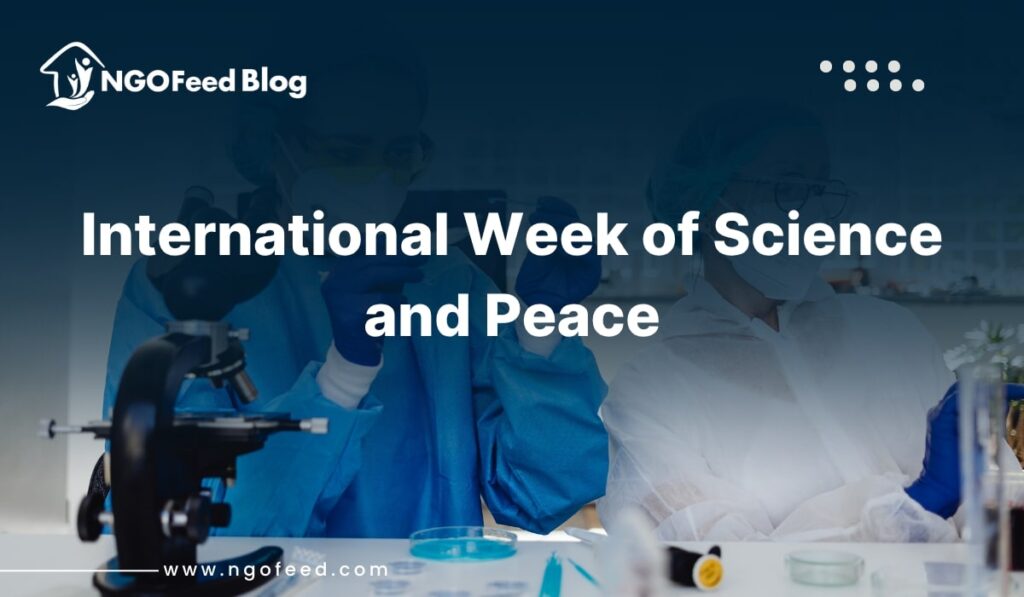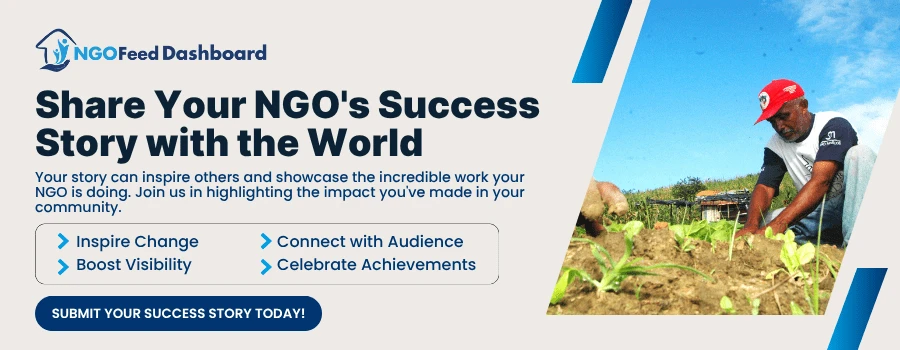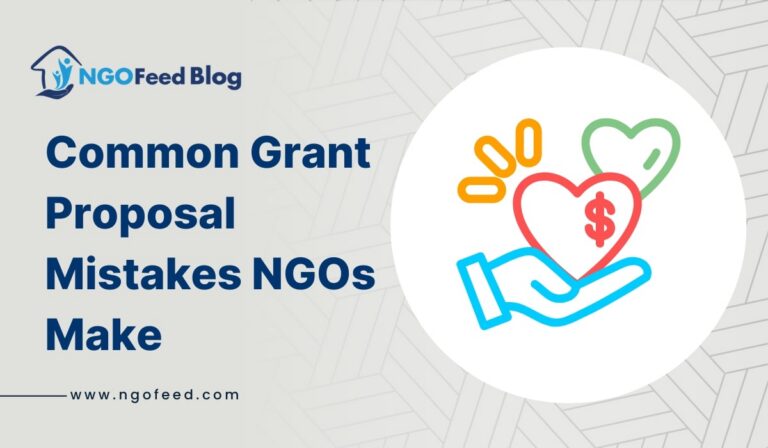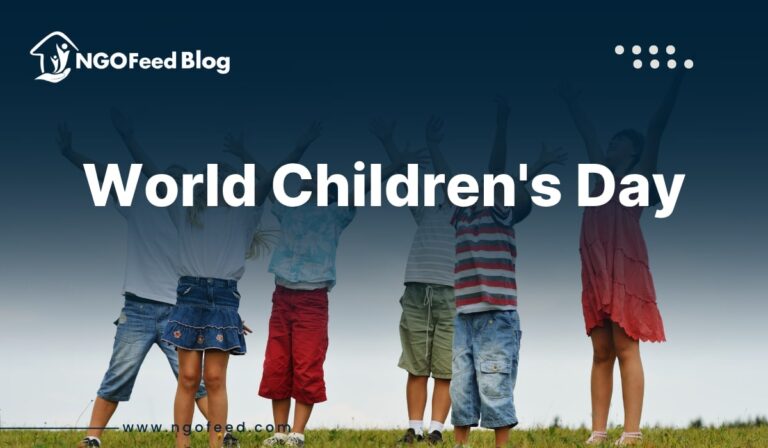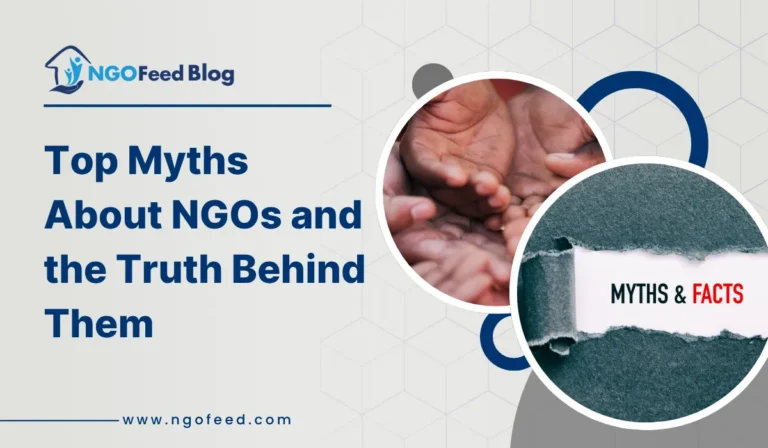“Where curiosity meets compassion, science becomes the path to peace.” In a world increasingly divided by conflict, climate change, social upheavals and mistrust, the need for bridges has never been greater. The International Week of Science and Peace serves as one such bridge, recognizing how science, technology and research can contribute not just to innovation, but to harmony, social justice, and sustainable peace. Observed annually from 9-15 November, this week-long event invites governments, academic institutions, NGOs and citizens to reflect on the role of science in advancing peace and to take actionable steps toward that goal.
Table of Contents
What is the International Week of Science and Peace?
The International Week of Science and Peace is a global observance dedicated to promoting the relationship between scientific progress and peaceful societies. It emphasizes that science is not only about discovery and technology but about applying knowledge ethically, inclusively and for the benefit of all.
According to the European Data Portal:
“The International Week of Science and Peace … is a global initiative aimed at promoting the role of science in fostering peace and collaboration.”
In other words, this week encourages dialogues across disciplines science with policy, research with society and innovation with community voices to ensure that scientific advances advance peace, rather than conflict.
International Week of Science and Peace History
This observance dates back to 1986, when the United Nations declared the week around 11 November as the International Week of Science and Peace following the International Year of Peace.
Originally, it was meant to emphasize that scientific research and international cooperation in science can reduce tensions, support human rights and foster sustainable development. Over the years, the week has evolved to cover emerging issues like open science, data sharing, conflict-sensitive science, climate‐conflict nexus and inclusive innovation.
International Week of Science and Peace 2025 Theme (Annual or Specific)
While each year may highlight different focal points, common themes include “Science for Peace,” “Open Data and Collaboration,” “Responsible Innovation” and “Science, Technology and Sustainable Development for All.”
For 2025, key emphases include:
- Open Science & Equity: Ensuring that scientific data and technology are accessible, especially to marginalized communities.
- Science in Conflict Prevention: Using scientific evidence to mediate resource conflicts, manage environmental stress and build peace.
- Technology for Resilience: Leveraging innovation to tackle climate-driven migration, health crises and social instability.
The European Data Portal notes that open data and shared scientific knowledge are “crucial” for this week’s objectives.
Objectives and Goals
The primary goals of the International Week of Science and Peace are:
- Raise Awareness: Show how science and peace are interconnected and how research can support a peaceful world.
- Encourage Cooperation: Foster partnerships among scientists, NGOs, policy-makers and communities across borders.
- Promote Responsible Research: Advocate for ethical, inclusive and transparent science that respects human rights and supports social equity.
- Link Science with Development: Illustrate how scientific innovation contributes to sustainable development goals, conflict prevention and humanitarian action.
- Empower Communities: Use science education and citizen science to engage populations in solutions, especially in vulnerable or conflict-affected areas.
Why It’s Important?
Science as a Peace Tool
Scientific knowledge can help address root causes of the role of NGOs in conflict, competition over resources, environmental degradation, health crises, technological inequality and misinformation.
For instance:
- Resource scarcity and climate change are well-known triggers of instability; science offers data, modelling and solutions.
- Unsustainable technological systems can exacerbate inequality; responsible science can help close gaps.
- Science diplomacy and cross‐border research strengthen trust and cooperation between nations.
Aligning with Global Development
The week aligns with frameworks such as the Sendai Framework for Disaster Risk Reduction and the Paris Agreement and contributes to multiple Sustainable Development Goals especially SDG 9 (Industry, Innovation & Infrastructure), SDG 16 (Peace, Justice & Strong Institutions) and SDG 17 (Partnerships for the Goals).
By focusing on the science–peace nexus, NGOs and civil-society actors can position themselves at the intersection of innovation and humanitarian action, increasing relevance, funding opportunities and impact.
How to Participate in the International Week of Science and Peace 2025?
- Educational Events & Workshops: Organize science-for-peace seminars, webinars and school talks highlighting themes such as “Science and Conflict,” “Technology for Sustainable Peace” and “Open Data for Development.”
- Citizen Science and Open Data Campaigns: Invite communities to participate in citizen science projects, climate monitoring, environmental mapping, resource usage surveys and link findings to peace-building initiatives. Use hashtags like #ScienceForPeace and #OpenData4Peace.
- Cross-sector Partnerships: Facilitate dialogue between universities, research institutions, NGOs and governments. Encourage science diplomacy, knowledge hubs and joint initiatives between conflict-sensitive regions.
- Technology for Good Challenges: Host hackathons or challenges that address peace-related issues: e.g. apps for early-warning, platforms for community voices in conflict zones and data dashboards for resource conflict.
- Public Awareness and Media Campaigns: Publish blogs, infographics and short videos explaining how science supports peace. Use storytelling feature scientists in conflict zones, community researchers and open data pioneers.
- Recognition and Awards: Recognize individuals or organizations whose scientific work has directly supported peace: e.g. climate researchers in fragile states, collaborative projects across borders and open-science platforms in low-income contexts.
NGOs’ Role and Challenges
Role of NGOs
NGOs play a pivotal part in the science-peace ecosystem:
- Facilitators: Bridging research institutions and communities; making science accessible, inclusive and human-centered.
- Implementers: Running projects where scientific solutions are applied for peace, e.g. resource-conflict mediation, climate adaptation in fragile states and digital literacy for peace.
- Advocates: Promoting open science, ethical innovation, research equity and transparent data sharing.
- Educators: Engaging youth, women and marginalized groups in science and peace activities, promoting lifelong learning and empowerment.
Common Challenges
- Resource scarcity: Many NGOs lack access to technical expertise, data infrastructure or research partnerships.
- Knowledge divide: Scientific language and formats may exclude community actors, bridging this gap is essential.
- Siloed sectors: Science, development and peace sectors often operate independently, integration is challenging.
- Digital inequality: Without inclusive access, technology can exacerbate rather than reduce inequality.
- Sustainability and scale-up: Innovative projects may start small but struggle to scale, especially in fragile contexts.
Additional Insights – Trends and Expert Perspectives
- Open Science and Peace: The open-data movement is playing an increasingly important role in conflict resolution and peace research.
- Science Diplomacy: Researchers from opposing nations working together can build trust and reduce geopolitical tensions.
- Technology and Equity: Emerging tech (AI, IoT, big data) offers peace-building tools, but only if access and capacity gaps are addressed.
- Inclusive Innovation: Engaging women, indigenous communities and youth in science ensures broader peace-impact.
- Environmental Science in Peacebuilding: Ecology, climate science and natural-resource research are central to preventing resource-based conflicts.
Experts emphasize: “Science cannot be neutral in a divided world, it must commit to human dignity, equity and the common good.” (Ali et al., 2025)
Conclusion
The International Week of Science and Peace is more than a symbolic observance, it’s a call to action. In a world where conflict, climate change and technological change intersect, science offers not only solutions but hope.
For NGOs, this week is a strategic moment to elevate their work: integrating research, data and innovation with community-driven peace efforts. Platforms like NGOFeed can amplify these voices and help scale impact.
From workshops in rural India to open-data platforms in Africa, from youth hackathons to cross-border research collaborations, science for peace is alive. And by embracing it, we step closer to a world where knowledge builds bridges not barriers.
Frequently Asked Questions (FAQs)
Q1. When is the International Week of Science and Peace observed?
It is observed annually from 9 to 15 November (though exact observance may vary) by United Nations member states and partner organizations.
Q2. What is the purpose of the week?
To highlight how science, technology and research can contribute to peaceful societies by addressing conflict drivers, promoting collaboration and supporting sustainable development.
Q3. How can small NGOs take part?
By organizing awareness events, linking with research partners, engaging communities in citizen science, launching technology challenges and sharing stories on social media with hashtags such as #ScienceForPeace.
Q4. Why is science important for peace?
Because science helps tackle root causes of conflict (resource scarcity, climate stress, health crises), fosters cooperation across borders and builds evidence-based solutions that supports stable societies.

